THE DIAGRAMS AND RELEVANT PIECES OF THE AMPLITUDES
Let us return to the total hadronic cross section in electron-positron annihilations. As has been discussed before, at leading order in perturbation theory the total cross section for the production of a massless quark-antiquark pair q reads
When considering perturbative corrections of the first order in the strong coupling constant, two types of diagrams contribute:
-
Corrections due to the emission of a virtual gluon, namely vertex correction
and quark self energy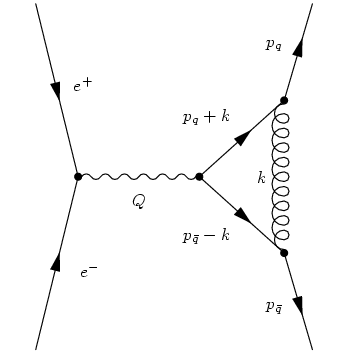

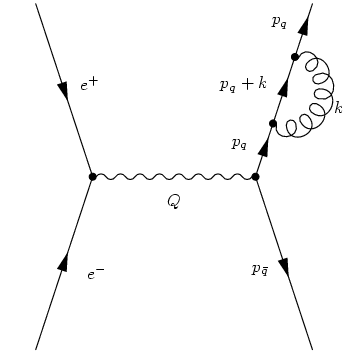

- Also, real corrections play a role, i.e. the emission of an extra gluon:
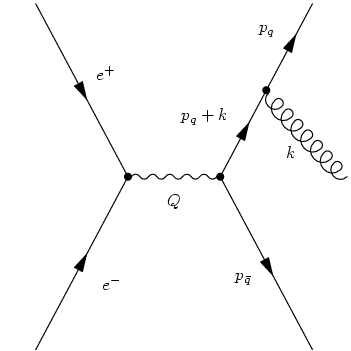

Here, two important points should be stressed:
- Namely, first, that in all amplitudes above, only the relevant QCD part is shown, the electron current, coupling to the photon, has been ignored: it is the same as in the leading order case;
-
and that, second, the amplitudes have to be added and squared. This sounds trivial but
there is some catch. The catch is easy to understand pictorially:

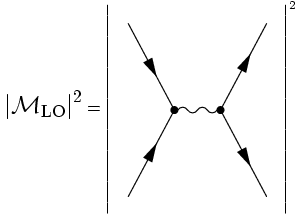

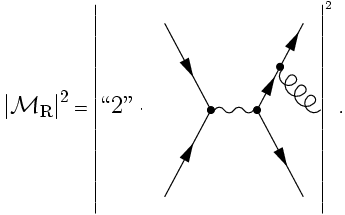
DIVERGENCE STRUCTURE
It is clear that the virtual diagrams may contain ultraviolet divergences, that is divergences for the loop momentum k→ infinity, that need to be regularised and renormalised. However, a little bit of thought shows that both the real and the virtual diagrams also contain a new class of divergence, called infrared divergence. This new type of divergent structure appears for either k→ 0 or when the gluon momentum becomes collinear with one of the quark momenta. In order to see this better, consider first the virtual amplitudes. Applying the anticommutation rule of the γ-matrices and the E.o.M. for the spinors on the vertex correction term results in


Applying the same reasoning to the real emission pieces, a few things change a little bit: First of all, the unconstrained loop integral over k is replaced with a phase space integration over k, fixing the invariant mass of the gluon. Hence, in this case, is fixed by a δ function such that k² = 0. Second, in this case the correction term stems from both diagram pieces, cf. the scetch above. However, following the same steps as above, shows that the real correction in the infrared limit merely amounts to a corrections factor to the LO cross section, this time given by

CANCELLATION OF INFRARED DIVERGENCES
At this point it should be simple to see that the infrared divergencies cancel exactly. This in fact should better be the case, since in any particle physics experiment as in any other real situation, charges are accelerated leading to the emission of (electromagnetic or strong) radiation through Bremsstrahlung. This radiation is predominantly soft; taking a closer look, it turns out that the corresponding Fock state of, e.g. an electron, is populated with infinitely many photons with zero energy. In order to ensure that physical quantities such as cross sections remain finite in the presence of such soft Bremsstrahlung - as they have to, since cross sections can be measured and are finite! - these infrared divergencies have to cancel. This is the essence of two theorems, namely the Kinoshita-Lee-Nauenberg and the Bloch-Nordsieck theorems.At this point it is worth noting that the reasoning above in fact generalises to all orders, i.e. to arbitrarily many photons or gluons. This can be seen straightforwardly: The trick above (commuting the slashed momenta and the γ-matrices before emplyoing the E.o.M.) just needs to be repeated consecutively.
TOTAL AND DIFFERENTIAL CROSS SECTIONS FOR ee→qq AND ee→qqg
When doing the full calculation, the total hadronic cross section reads
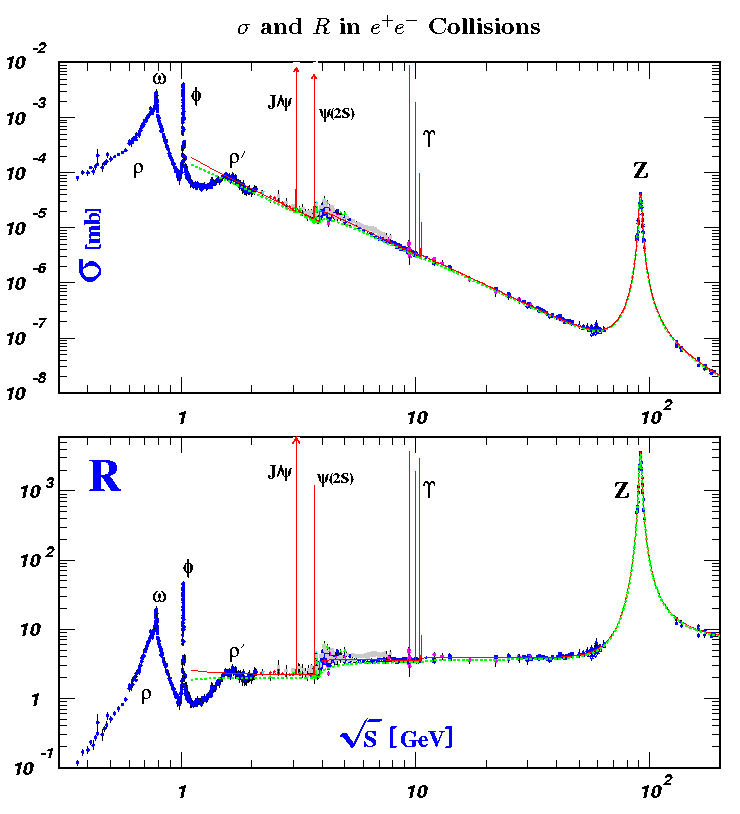
So far, only the soft/collinear limit of real gluon emission has been dealt with. Let us now turn to a discussion of the "full truth" of extra gluon emission in quark-antiquark production in electron-positron annihilations. From the reasoning above it is clear that there are two diagrams, related to the gluon emitted by either the quark or the antiquark line. The two Feynman amplitudes read









